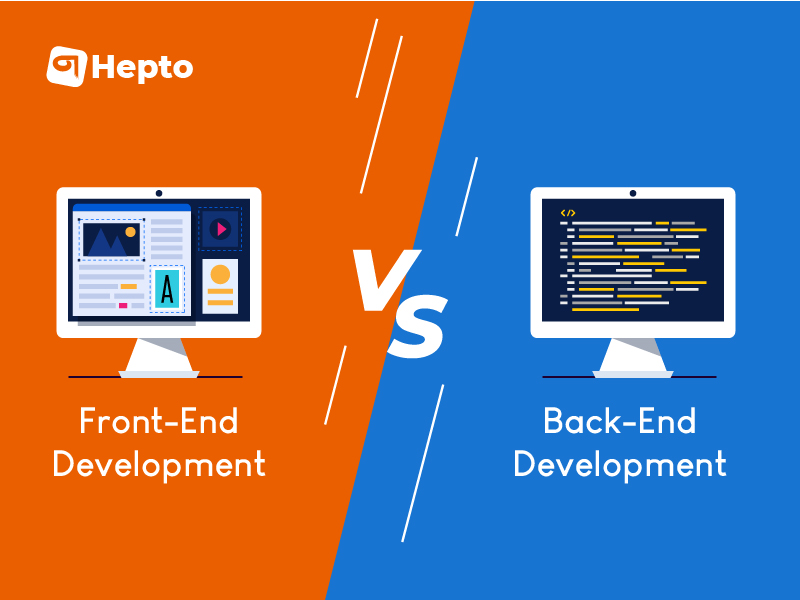Front End Development vs Back End Development: Where to Start?
Everyone heard the phrases “front end” and “back end” being tossed around in reference to programming. Do you want to be a front-end developer or a backend developer? You have to understand the career goals at the end of a coding boot camp can make it easier. This can be tricky if you aren’t familiar with front-end and back-end development. Let’s dive into the difference between front-end web development and back-end development: which programming languages you have to learn, and what to expect from a career as a front-end or back-end developer!
Front-End Development
Front-End development manages everything that users visually see first in the browser or mobile application. Front-End developers are responsible for the look and feel of a site or an application.
What is Front-End Development?
Front-End development focuses on the coding and creation of elements and features of a website or an application that will be seen by the user that is client-side development. It’s all about designing the surface level of applications by changing their style and appearance to meet the needs of the user and making sure the visual aspects of a website or an application are functional.
Front-End developers will be engaged in code analyzing, designing, and debugging applications along with ensuring a seamless user experience.
Front-End developers are responsible for customizing layouts, adding animated elements, ensuring accessibility, and building elements like
- Layouts
- Buttons
- Navigation
- Images
- Graphics
- Animations
- Content organization
What are the programming languages used in Front-End Development?
Generally, Front-End developers work with Front-End languages like HTML, CSS, and Javascript.
Front-End Languages
- HTML is the structural backbone of a website and the standard markup language for creating webpages
- CSS (Cascading Style Sheets) is used to bring style and flair and defines a site’s colours, fonts, and the style of the visuals, and
- JavaScript can be used to make a site interactive and it affects how elements on the page move around.
Front-End Frameworks
The Front-End Development also works in its own set of frameworks and libraries. You will also want to familiarize yourself with some front-end frameworks. Here are some of the frameworks and libraries a front-end developer would work with:
- AngularJS
- React.js
- jQuery
- Vue
- Ember
What is Back-End Development?
Back-End development dictates how programs function by creating hidden processes that run behind the scenes that refer to the server side of an application and everything that communicates between the database and the browser. Back-End Development refers to the server side of development primarily focused on how the site works.
The Back-End development process deals with storing and arranging data while also ensuring the front end is functioning well and Back-End web developers work on tasks like
- Building code
- Troubleshooting and debugging web applications
- Database management
- Framework utilization
What are the programming languages used in Back-End Development?
Back-End developers know front-end languages such as HTML and CSS but need to know back-end languages such as Java, PHP, Ruby, etc to get the back-end. Back-End developers are focused on a site’s responsiveness and speed and used to create dynamic sites which are different from static sites in that these types of websites store database information.
Back-End developers work in languages like PHP, C++, Java, Ruby, Python, JavaScript, and Node.js. Here are some of the Back-End languages and frameworks:
Back-End Languages
- PHP - A server-side scripting language.
- Java - A highly popular platform and programming language.
- Python - A general-purpose coding language.
Back-End Frameworks
- Express
- Django
- Rails
- Laravel
- Spring
Conclusion
While learning to code and work with front-end and back-end languages, you will gain more insight into which tasks you prefer as a developer and can come to a better understanding of if you prefer one side of development over another. We hope this blog about front-end development and back-end development was helpful.
If you have more questions about front-end and back-end development or want to learn more about our programs visit us @ https://www.heptotechnologies.com/
